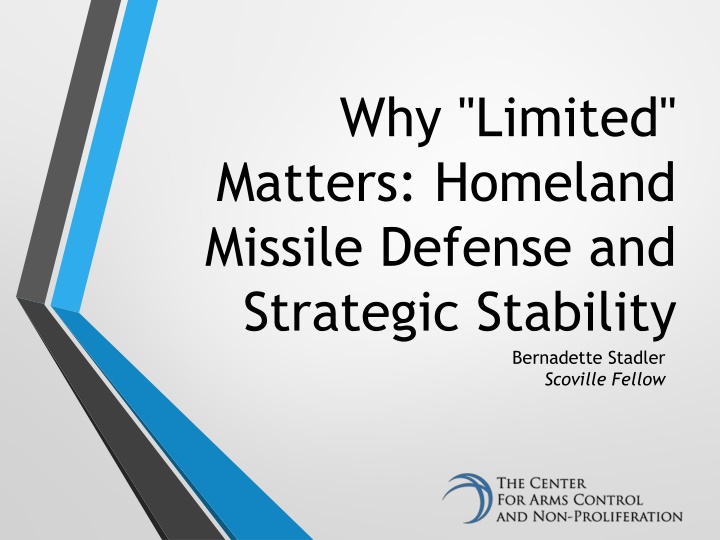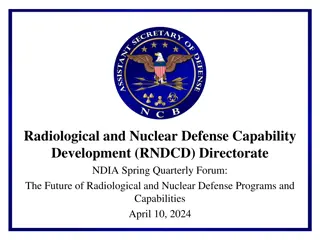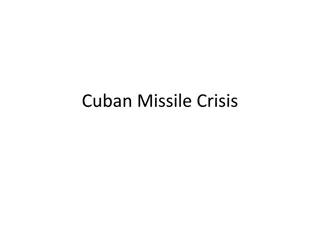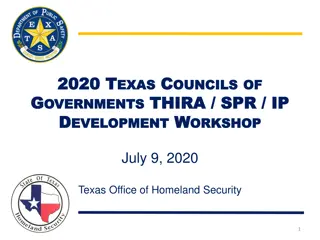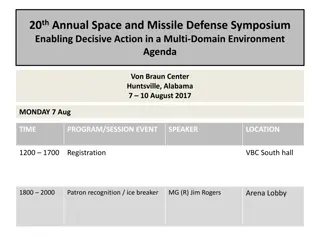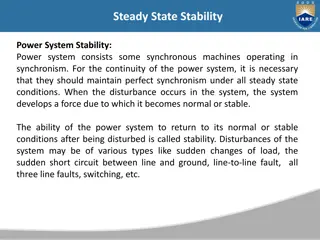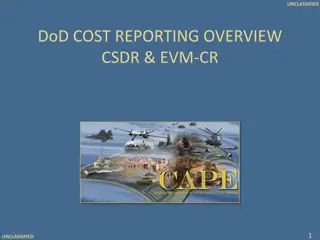Limited Matters: Homeland Missile Defense & Strategic Stability
U.S. missile defense policy's evolution from the Cold War to present, impacted by treaties, technological advancements, and the shift towards a robust defense system capable of protecting against ballistic missile threats. Explore the transition from ABM Treaty to National Missile Defense Act of 1999, and the implications of removing the word "limited" in missile defense strategies.
Download Presentation

Please find below an Image/Link to download the presentation.
The content on the website is provided AS IS for your information and personal use only. It may not be sold, licensed, or shared on other websites without obtaining consent from the author.If you encounter any issues during the download, it is possible that the publisher has removed the file from their server.
You are allowed to download the files provided on this website for personal or commercial use, subject to the condition that they are used lawfully. All files are the property of their respective owners.
The content on the website is provided AS IS for your information and personal use only. It may not be sold, licensed, or shared on other websites without obtaining consent from the author.
E N D
Presentation Transcript
Why "Limited" Matters: Homeland Missile Defense and Strategic Stability Bernadette Stadler Scoville Fellow
U.S. missile defense policy during the Cold War Missile defense first explored after WWII, but technical challenges prevent any systems from being deployed until 1975 1972: Anti-Ballistic Missile Treaty signed 1983: Strategic Defense Initiative (SDI) proposed. If deployed, the program would have required amending the ABM treaty.
ABM Treaty Effective measures to limit anti-ballistic missile systems would be a substantial factor in curbing the race in strategic offensive arms and would lead to a decrease in the risk of outbreak of war involving nuclear weapons would contribute to the creation of more favorable conditions for further negotiations on limiting strategic arms
U.S. missile defense policy after the Cold War SDI is replaced by Global Protection Against Limited Strike (GPALS) Throughout the 1990s, Congress considered several bills calling for the deployment of a limited missile defense system March 1999: National Missile Defense Act of 1999 passed 2002: United States withdraws from ABM Treaty
National Missile Defense Act of 1999 Establishes that it is U.S. policy to deploy as soon as possible a National Missile Defense system capable of defending the territory of the United States against limited ballistic missile attack
Removing the word limited 1999 MDA It is the policy of the United States to deploy as soon as is technologically possible an effective National Missile Defense system capable of defending the territory of the United States against limited ballistic missile attack (whether accidental, unauthorized, or deliberate). Change approved without debate in House Armed Services Committee, and no public debate in the Senate Armed Services Committee FY2017 NDAA It is the policy of the United States to maintain and improve an effective, robust layered missile defense system capable of defending the territory of the United States, allies, deployed forces, and capabilities against the developing and increasingly complex ballistic missile threat.
Implications Amendment characterized as a paradigm shift Missile defense experts have stated that the change in legislation could build momentum for missile defense expansion
2018 National Defense Authorization Act Authorizes deployment of 28 additional interceptors; calls for a report on increasing to 100 or more interceptors Arguments in favor of this provision largely focus on the North Korean threat
Could GMD threaten near-peer competitors? GMD begins to pose a threat when it can block 20% or more of an opponent s ballistic-missile retaliation on generated alert Source: Dean A. Wilkening, Ballistic-Missile proliferation, page 40.
Potential Responses Put forces on alert earlier in a crisis In 2016, the Union of Concerned Scientists reported that China was considering putting missiles on high alert, possibly in part because of U.S. missile defense Develop more sophisticated penetration measures Deploy more missiles or refuse to continue disarming
